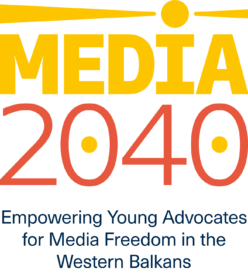JOURNALISTS ASSOCIATIONS
What are the key journalists associations? What role do they play, how influential they are? How many members do they have?
- Throughout WB region there are journalistic associations, some with long tradition, some newly formed. In some media systems (BIH, MKD, SRB) the number of journalists associations is very high reflecting political and ethnic divisions, and preventing joint articulation of journalists’ views. The number members ranges from 600 to 1,000.
- Journalists associations are mostly formed as independent, non-governmental and non- political party organisation that are dedicated to protection of journalists, promotion of freedom of speech, and promotion of professionalism. Some media systems also have strong journalists’ trade unions (MNE), while in others the unionization is rare.
- Associations are successful in providing support and service to their members and in alarming the public about attacks on journalists. However, their impact on media policy is relatively low.
SELF-REGULATION
Is there an agreed code of ethics among journalists? Is there a press council? How efficient are the mechanisms of self-regulation?
- Across the region, there is an agreed code of ethics among journalists.
- The codes in most WB media systems do not address novel technological challenges (e.g. related to AI)
- Press councils are established as self-regulatory bodies that promote the code of ethics and respond to complaints regarding violations of the code.
- Press councils in WB have a short history of institutionalization. They struggle to increase the impact by expanding the number of media under the competences of the council. Further, the mechanisms of self-regulation are not sufficient safeguards against unprofessional journalists conduct and the decisions reached on the violations of the code are of little impact.
SAFETY OF JOURNALISTS
Are journalists at risk? How frequent are the attacks on journalists? Which attacks are most frequent? Are there efficient mechanisms for protection of journalists?
- Journalism in the WB region is a high risk profession, with journalists frequently experiencing different types of pressures and attacks.
- Throughout the region the number of attacks on journalist is on the rise, with the verbal attacks and online harassment and threats being most frequent ones. Other types of pressures include obstruction of work, smear campaigns, physical attacks and more and more frequently SLAPPs.
- In less than 10 years, almost 2.000 attacks are noted in WB: 89 in MKD, 115 in ALB, 227 in MNE, 361 in KOS, 333 in BIH, and 698 in SRB. Severe cases of physical attacks on journalists are noted in SRB, MNE, and ALB.
- Mechanisms for protection of journalists are inefficient – police, prosecution and judiciary are slow and ineffective in processing the cases. Some of the gravest attacks are still not processed, creating the culture of impunity.
- MNE and SRB have specific bodies committed to monitoring investigations of violence against and murders of journalists, and MKD has a special prosecutor, but the full effects of these bodies are yet to be seen. In MNE protection of journalists is also ensured through the penal code, and similar initiative is under way in ALB.
- For the most part pressure on journalists comes from political parties and state officials. To a lesser degree economic and editorial pressures are also noted.
SOCIO-ECONOMIC POSITION OF JOURNALISTS
What is the social and economic standing of journalists? Do they receive regular salaries? Are they paid sufficiently?
- Journalists in WB have poor social and economic standing, aggravated by recent economic crises, and generally poor media markets challenged by other digital content providers.
- Most of the journalists do not enjoy stable contracts and salaries are very low – often below the average income. Gender pay gap is registered.
- Unpaid overtime work, delays in payment of salaries and the lack of permanent employment make journalism a precarious profession.
- Due to social and economic standing, young people are not inclined to work in journalism.
CITIZENS
What is the public perception of journalists? What is the level of trust in media and journalism?
- With notable exceptions of renowned journalists, journalism is not a profession respected by public. Journalists are seen as mouthpieces of political parties, a perception that cuts across the polarized media landscapes.
- With the exception of KOS, trust in media and journalists is very low.
EU DIMENSION
- The European Convention on Human Rights protects freedom of expression. Freedom and protection of journalists are upheld by numerous other directive and recommendations, most recently by the European Media Freedom Act.
- As part of accession process EU supports professionalization of journalists, and protection of journalists, monitoring the implementation of EU standards.
Key takeaways about Journalists.
